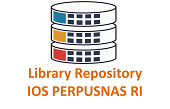PENGALAMAN PELANGGAN MEMBELI TIKET KONSER COLDPLAY: MENAMBANG ULASAN ONLINE BERDASARKAN PEMODELAN TOPIK DAN ANALISIS SENTIMEN
Abstract
This study aims to analyze customer experience in buying tickets for the Coldplay Concert in Indonesia using sentiment analysis and topic modelling. Data is collected from online customer reviews about concert ticket purchases via social media platforms such as Twitter. The stages of the research include data collection, data labelling, data pre-processing, topic modelling using Latent Dirichlet Allocation (LDA), sentiment analysis, and interpretation of the results. The results of the sentiment analysis show that most reviews are positive, with customers expressing satisfaction with the ticket-buying process, experience at the concert, Coldplay's performance, and customer service. Several primary topics frequently appearing in reviews have been identified through topic modelling, including ticket-buying, concert experience, ticket prices, customer service, concert performance, concert location, togetherness with fans, accessibility, concert facilities, and supporting events. The interpretation of each topic provides insight into customer preferences and expectations. Recommendations for concert organizers include improving customer service, ensuring performance quality, choosing a convenient concert location, and paying attention to accessibility and the atmosphere around the concert venue. This research provides an in-depth understanding of customer experience and can serve as a guide for concert organizers to improve customer experience in the future.
Downloads
References
[2] L. Altin, R. Ahas, S. Silm, and E. Saluveer, “Megastar concerts in tourism: a study using mobile phone data,” Scandinavian Journal of Hospitality and Tourism, vol. 22, no. 2, pp. 161–180, Mar. 2022, doi: 10.1080/15022250.2021.1936625.
[3] A. Onan, S. Korukoğlu, and H. Bulut, “LDA-based topic modelling in text sentiment classification: an empirical analysis,” 2016.
[4] T. Li, X. Xu, and Z. Wang, “Architecture Design of Fourth-Party Cultural Performances Service Platform,” in 2016 9th International Conference on Service Science (ICSS), ChongQing, China: IEEE, Oct. 2016, pp. 66–73. doi: 10.1109/ICSS.2016.17.
[5] J. Ding and L. Yu, “Analysis on the Construction of Online Marketing Platform for Performing Arts Ticketing under the Background of Big Data,” IOP Conf. Ser.: Mater. Sci. Eng., vol. 750, no. 1, p. 012014, Feb. 2020, doi: 10.1088/1757-899X/750/1/012014.
[6] K. Duffy, E. Reid, and J. Finch, “Sold out? Reconfiguring consumer demand through the secondary digital ticket market,” Consumption Markets & Culture, vol. 23, no. 2, pp. 174–194, Mar. 2020, doi: 10.1080/10253866.2019.1684270.
[7] C. J. Westgate, “Popular Music Fans and the Value of Concert Tickets,” Popular Music and Society, vol. 43, no. 1, pp. 57–77, Jan. 2020, doi: 10.1080/03007766.2019.1601152.
[8] S. C. Brown and D. Knox, “Why go to pop concerts? The motivations behind live music attendance,” Musicae Scientiae, vol. 21, no. 3, pp. 233–249, Sep. 2017, doi: 10.1177/1029864916650719.
[9] R. Gingrich, “Wearables in the Performing Arts: An RFID Primer for Arts Managers,” 2017.
[10] School of Computer Sciences, Universiti Sains Malaysia (USM), Malaysia, T. A. Rana, Y.-N. Cheah, School of Computer Sciences, Universiti Sains Malaysia (USM), Malaysia, S. Letchmunan, and School of Computer Sciences, Universiti Sains Malaysia (USM), Malaysia, “Topic Modeling in Sentiment Analysis: A Systematic Review,” J. ICT Res. Appl., vol. 10, no. 1, pp. 76–93, Oct. 2016, doi: 10.5614/itbj.ict.res.appl.2016.10.1.6.
[11] H. Jelodar et al., “Latent Dirichlet allocation (LDA) and topic modeling: models, applications, a survey,” Multimed Tools Appl, vol. 78, no. 11, pp. 15169–15211, Jun. 2019, doi: 10.1007/s11042-018-6894-4.
[12] C. Lin and Y. He, “Joint sentiment/topic model for sentiment analysis,” in Proceedings of the 18th ACM conference on Information and knowledge management, Hong Kong China: ACM, Nov. 2009, pp. 375–384. doi: 10.1145/1645953.1646003.
[13] M. C. Good and M. R. Hyman, “Direct and indirect effects of fear‐of‐missing‐out appeals on purchase likelihood,” J Consumer Behav, vol. 20, no. 3, pp. 564–576, May 2021, doi: 10.1002/cb.1885.
[14] V. G. Bertalan and E. E. S. Ruiz, “Using topic modeling to find main discussion topics in brazilian political websites,” in Proceedings of the 25th Brazillian Symposium on Multimedia and the Web, Rio de Janeiro Brazil: ACM, Oct. 2019, pp. 245–248. doi: 10.1145/3323503.3360644.
[15] T. Wallin Andreassen and B. Lindestad, “Customer loyalty and complex services: The impact of corporate image on quality, customer satisfaction and loyalty for customers with varying degrees of service expertise,” International Journal of Service Industry Management, vol. 9, no. 1, pp. 7–23, Mar. 1998, doi: 10.1108/09564239810199923.
[16] T. R. Hannigan et al., “Topic Modeling in Management Research: Rendering New Theory from Textual Data,” ANNALS, vol. 13, no. 2, pp. 586–632, Jul. 2019, doi: 10.5465/annals.2017.0099.
[17] L. F. Luna-Reyes and D. L. Andersen, “Collecting and analyzing qualitative data for system dynamics: methods and models: Collecting and Analyzing Qualitative Data,” Syst. Dyn. Rev., vol. 19, no. 4, pp. 271–296, Dec. 2003, doi: 10.1002/sdr.280.
[18] Y. Asri, W. N. Suliyanti, D. Kuswardani, and M. Fajri, “Pelabelan Otomatis Lexicon Vader dan Klasifikasi Naive Bayes dalam menganalisis sentimen data ulasan PLN Mobile: Analisis Sentimen,” petir, vol. 15, no. 2, pp. 264–275, Nov. 2022, doi: 10.33322/petir.v15i2.1733.
[19] P. Chandrasekar and K. Qian, “The Impact of Data Preprocessing on the Performance of a Naive Bayes Classifier,” in 2016 IEEE 40th Annual Computer Software and Applications Conference (COMPSAC), Atlanta, GA, USA: IEEE, Jun. 2016, pp. 618–619. doi: 10.1109/COMPSAC.2016.205.
[20] A. Onan, S. Korukoğlu, and H. Bulut, “LDA-based topic modelling in text sentiment classification: an empirical analysis,” 2003.
[21] S. B. Bhonde and J. R. Prasad, “Sentiment Analysis - Methods, Applications & Challenges,” vol. 6, no. 6, 2015.
[22] T. Verma, R. Renu, and D. Gaur, “Tokenization and Filtering Process in RapidMiner,” IJAIS, vol. 7, no. 2, pp. 16–18, Apr. 2014, doi: 10.5120/ijais14-451139.
[23] K. Zvarevashe and O. O. Olugbara, “A framework for sentiment analysis with opinion mining of hotel reviews,” in 2018 Conference on Information Communications Technology and Society (ICTAS), Durban: IEEE, Mar. 2018, pp. 1–4. doi: 10.1109/ICTAS.2018.8368746.
[24] E. Haddi, X. Liu, and Y. Shi, “The Role of Text Pre-processing in Sentiment Analysis,” Procedia Computer Science, vol. 17, pp. 26–32, 2013, doi: 10.1016/j.procs.2013.05.005.
[25] R. Das, M. Zaheer, and C. Dyer, “Gaussian LDA for Topic Models with Word Embeddings,” in Proceedings of the 53rd Annual Meeting of the Association for Computational Linguistics and the 7th International Joint Conference on Natural Language Processing (Volume 1: Long Papers), Beijing, China: Association for Computational Linguistics, 2015, pp. 795–804. doi: 10.3115/v1/P15-1077.
[26] B. Tantular, “APLIKASI LATENT DIRICHLET ALLOCATION (LDA) PADA CLUSTERING DATA TEKS,” 2017.
[27] Y. Zhang, R. Jin, and Z.-H. Zhou, “Understanding bag-of-words model: a statistical framework,” Int. J. Mach. Learn. & Cyber., vol. 1, no. 1–4, pp. 43–52, Dec. 2010, doi: 10.1007/s13042-010-0001-0.
[28] E. Ekinci and S. İlhan Omurca, “Concept-LDA: Incorporating Babelfy into LDA for aspect extraction,” Journal of Information Science, vol. 46, no. 3, pp. 406–418, Jun. 2020, doi: 10.1177/0165551519845854.

This work is licensed under a Creative Commons Attribution 4.0 International License.







_uk501.png)

.2022-2026_uk200_pxl_.jpg)















.png)
3.png)


